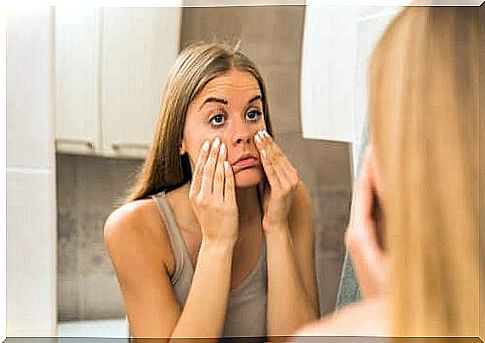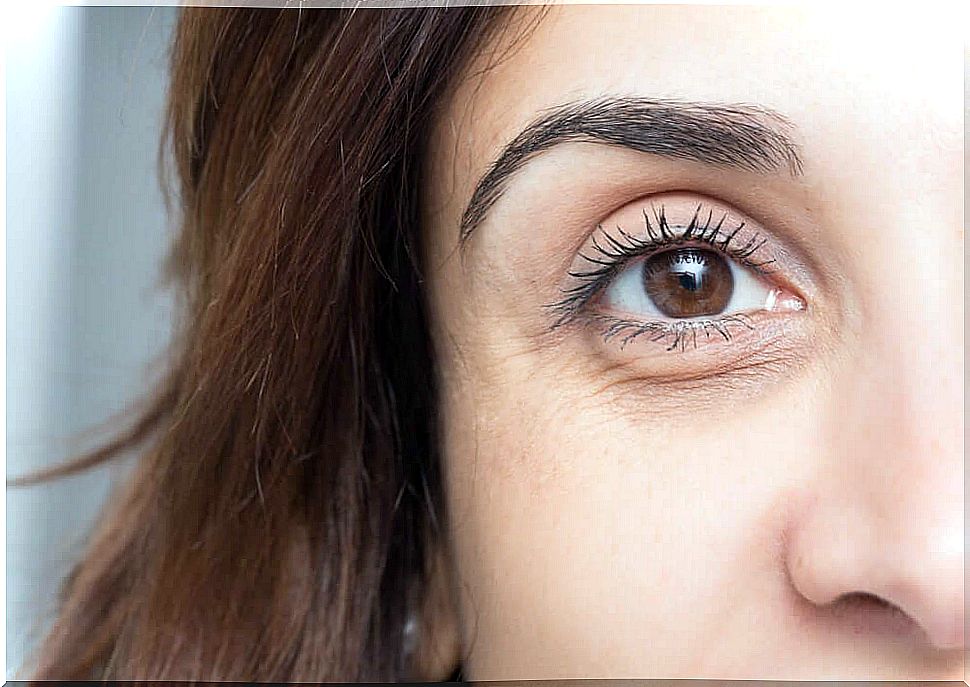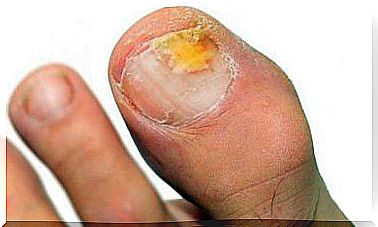Dark Circles Under The Eyes

When people get dark circles under their eyes, they automatically associate them with a bad night’s sleep. While this is one of the most common causes, it is not the only reason.
Similarly, they often believe that it only occurs when a person is ill. While it is true that a person who is ill often shows this sign, it is also true that there are healthy people with the same problem.
In any case, it is rarely related to any major health problem. The question is then… Why does it occur? There are several answers to this question.
What are these dark circles?
Dark circles are a bluish, greyish or purple color that appears under the lower eyelids. Most often this happens only occasionally. However, there are people who often have this under their eyes, even though they are not sick and have slept well.
If they are seen on the lower eyelid, it is because this skin area is quite thin and sensitive. It is only half a millimeter thick, so it is actually 5 times thinner than the skin of the rest of the face and 10 times thinner than the skin of the rest of the body.
Similarly, there is less collagen in the lower eyelids and this area lifts up more easily due to the blink. All this makes the shades of the blood vessels transparent in a clearer way than in other areas of the body.

Bags and dark circles under the eyes
Bags and dark circles are two similar problems, but they are not the same problem. They are often confused because they occur in the same area: the lower eyelid. However, they are different in nature and have different causes, although they sometimes occur simultaneously.
As mentioned above, dark circles correspond to an increase in the pigmentation in the eyelid area. With regard to this problem, a study published in the International Journal of Dermatology distinguishes between three types of dark circles under the eyes:
- Pigmented. They are related to an increase in melanin in the eyelids.
- Vascular. In these, the blood vessels in the eyelid area are transparent.
- Swelling around the eyes. In this case, a marked furrow runs from the inner corner of the eye to the cheek.
Bags under the eyes, on the other hand, are a swelling or abundance that occurs in the lower eyelid. As such, they have no particular color and occur due to loss of muscle tone in the eyelid, fluid retention or puffiness of the eye fat.
Why do dark circles appear under the eyes?
One of the causes of dark circles under the eyes is genetic. In this case, the eyelid area is more pigmented and the trait is inherited. In fact, some ethnicities may also be more prone to darker skin under the eyes.
Causes:
- Fatigue. This is one of the most common causes. Fatigue causes the blood vessels to dilate, and the delicate skin of the eyelid reflects this more clearly (especially if fatigue is accompanied by stress).
- Drugs. Some hypotensive eye drops (ie those that reduce pressure in the eye) cause pigmentation around the eye.
- Unbalanced diet. Excessive intake of salty or caffeinated foods, especially in the evening, leads to fluid retention and contributes to the appearance of dark circles under the eyes.
- Sunlight. The lower eyelids are sensitive to sun damage. Excessive exposure causes the production of melanin to be activated, thus creating dark circles under the eyes.

Other reasons:
- Allergic reaction to cosmetics. When the skin does not tolerate a particular type of cosmetic, it can generate reactions such as darker skin under the eyes. This is done with products such as concealer or eyeliner.
- Other allergies. Allergies lead to more histamine secretion and these generate vascular dilation. Similarly, if people have itchy eyes and they rub them heavily or often, dark circles are also possible.
- Fluid retention. Fluid retention is one of the causes of this problem, in addition to bags under the eyes.
- Hormonal changes. Hormonal changes are not a direct cause of dark circles under the eyes, but they do generate changes in the body that affect eyelid pigmentation, such as fluid retention.
- Aging. The passage of time causes the skin of the eyelid to become thinner and more transparent.
- Other reasons. Iron deficiency, atopic dermatitis, eczema and reduced fat around the eyes are also causes.
Accept them
The causes of this problem are different and can vary from person to person. However , they do not usually indicate serious health problems (except when they are the result of fluid retention or disease).
In general, enhancing aesthetic care can help reduce them. However, expert José María Rumbo-Prieto suggests that the ideal would be to learn to accept them. In this regard, the ultimate solution to any change is to undergo pigmentation treatment. Therefore, visit a specialist for detailed information.









